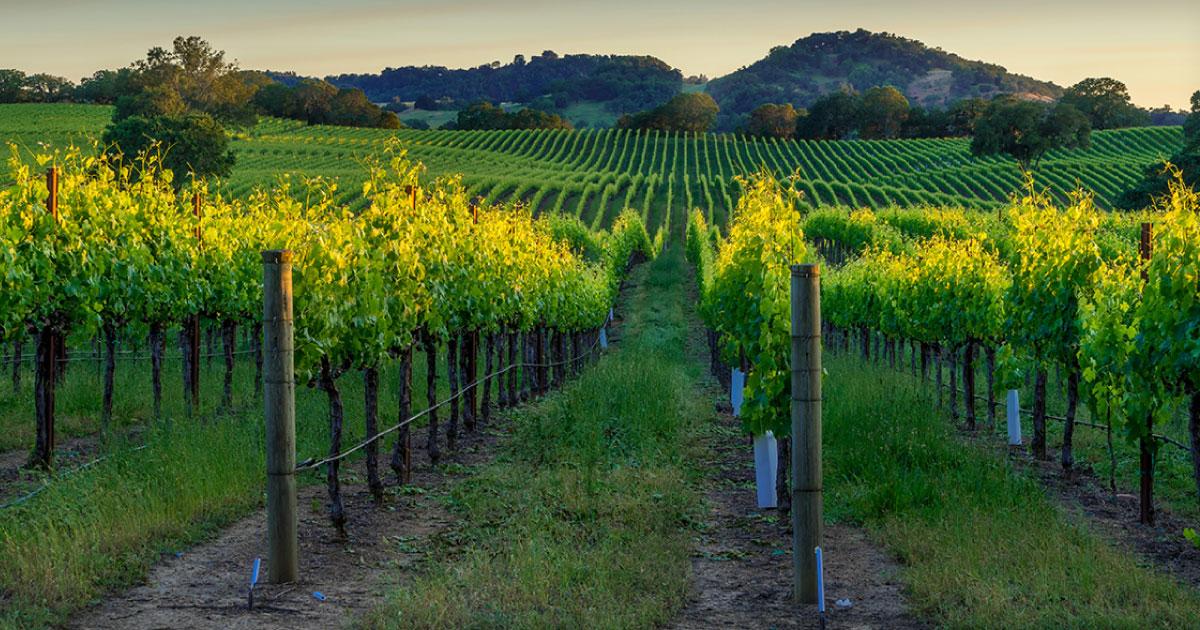Ranging from fires and floods in California to hurricanes in the Caribbean and Atlantic—striking popular tourism and meeting destinations from Puerto Rico to Florida—2017 was a bad year for natural disasters in the Western Hemisphere. (Unfortunately, Hurricane Florence seemed all too familiar when it struck the Carolinas last month.)
And television news coverage went “wall-to-wall,” with 24-hour broadcasts of every heart-wrenching detail. That news coverage became something of a second wave of damage to the destinations, convincing many casual observers that it would be a smart idea to stay away from those locales for a few years—thus depriving them of much-needed tourism dollars that can help the destinations rebuild and rebound.
According to industry professionals such as Jorge L. Perez, general manager of the 600,000-square-foot Puerto Rico Convention Center, which has been up and running since January, the disaster coverage impact is a double-edged sword.
“To be sure, people see the coverage, and it creates a special challenge for us to get the word out and tell the world that we are up and running and ready to move forward,” he says. “But, on the other hand, the meeting and tourism industry is such that people in that industry all around the world want to help the destinations that endure these challenges. We actually have groups that want to come here and want to help us rebound from Hurricane Maria, and our convention center business is higher than before Maria.”
The sentiments of Perez were reflected by industry professionals in California, Florida, Texas and other places that suffered natural disasters in 2017.
Here is how those areas are rebounding.
PUERTO RICO
With the recent news that the official death toll from Maria in Puerto Rico has been raised from the original 64 to 2,975, the challenges to attract tourism and meetings are significant, but the facts on the ground there are that despite significant problems that linger in residential areas around the island, the core meetings and tourism infrastructure in San Juan, the island’s largest city, is rebuilt, robust and has successes to report.
In March, the Puerto Rico Convention Center hosted its largest international convention in years with the Internet Corporation for Assigned Names and Numbers (ICANN), featuring 2,000 participants from 150 countries.
“The ICANN attendees said we hit it out of the park for them, and now it’s our job to share this story with the world,” Perez says.
That job became easier in the spring of this year with the creation of a new official destination marketing organization (DMO), Discover Puerto Rico, headed by an acclaimed industry professional, Brad Dean, who for 15 years was CEO of the Myrtle Beach (S.C.) CVB.
Dean hit the ground running in March with a focused plan to spread the word about Puerto Rico’s rebound.
“Puerto Rico is up and running with over 132 hotels, more than 4,000 restaurants and 189 attractions open right now, available for visitor enjoyment,” Dean said recently. “We offer state-of-the-art meeting and convention facilities with the largest and most technologically advanced convention center in the Caribbean, and this growing sector is a major priority as investments continue. We have exciting plans for 2019 including a five-acre hospitality and entertainment district built by Island Hospitality Partners (led by PRISA Group) and the Puerto Rico Convention Center District Authority. District San Juan is forecasted to be an incredibly vibrant space for conventions and performances.”
HOUSTON
If ever there was a stark dichotomy in how a natural disaster impacts different segments of one geographical location, it is Hurricane Harvey, which tied Hurricane Katrina as the worst hurricane in U.S. history in August 2017, causing US$125 billion in property damage and setting an all-time record for rainfall by a hurricane with 60.58 inches in Southeast Texas, which suffered massive flooding, causing significant damage to thousands of structures—leaving thousands of private homes that had no flood insurance in wrecked conditions that still exist.
By contrast, the main tourism infrastructure in Houston, the city hit hardest by Harvey, suffered no major damage, with the city’s George R. Brown Convention Center remaining open throughout the storm and even serving as a rescue shelter for evacuees for up to three weeks after the storm. The primary meeting and convention hotels in the city also were not damaged by the flooding that ravaged some parts of the city.
About 98 percent of the city’s 88,000 guest rooms in some 890 hotels remained open during the flood and did not close afterward. About 20 hotels representing two percent of Houston’s room inventory—some 1,300 guest rooms—were forced to close for renovations. Of those, about half are re-opened now, and three hotels with a combined 600 guest rooms will re-open this fall.
No scheduled, major event had to cancel—although five events were rescheduled for Houston at a later date.
Of the facilities that tend to attract meeting attendees, the city’s theater district was the one part of the equation that suffered significant flooding. The district, which borders Buffalo Bayou in downtown Houston, was heavily impacted, including Wortham Center (which was scheduled to reopen last month), Alley Theater (reopened Nov. 24, 2017) and Jones Hall (reopened Oct. 20, 2017).
Because the Houston Grand Opera’s (HGO) performance hall was significantly damaged by the flooding and was not able to open in time for the opera’s fall 2017 season, the George R. Brown Convention Center came to the rescue for the city’s fine music lovers. An opera hall within one section of the convention center was named the HGO Resilience Theater, and performances such as Electra and The Barber of Seville were performed on schedule for Houston symphony lovers’ delight.
Leah Shah, public relations director for Visit Houston, says one of the aspects of the recovery effort that the staff of the convention center were most proud of was the quick conversion to turn the center into a shelter for thousands of flood refugees.
“Within an hour of the time the staff of the George R. Brown were notified to prepare to start serving as a shelter, it was up and running as one, complete with sleeping areas for families, places for emergency medical services to set up to do their work; there were even three square meals a day coming out of the kitchen,” she says. “The convention center is set up to serve thousands of convention attendees every day, so it becomes not that much of a stretch to make flood evacuees safe and comfortable.”
Christy Spisak, DMCP, president of the MPI Houston Area Chapter and director of sales and operations at Cosmo Cool Concepts Inc., says that when the convention center became an evacuee shelter, the local hospitality community really stepped forward to help those in need.
“Entertainment venders brought in performers to the center right when the crisis was in the thick of things, just to make this horrible situation a little more tolerable for those who had to leave their homes because of the flood waters,” she says.
Meeting groups from around the U.S. expressed their desire to bring events to Houston to help the economic recovery.
“ADMI (Association of Destination Managers International) wanted to bring their 2019 convention to Houston to help our city, so in all, a rough situation brought on by Harvey showed how giving and caring our industry can be,” Spisak says.
FLORIDA
When Irma, a Category 5 hurricane with winds gusting up to 180 miles per hour, seemed headed for the Florida Keys on Sept. 9, 2017, it looked like America’s favorite sun and sand archipelago was in for a huge disaster. But the Keys got a couple of breaks at the last minute. First, the wind diminished a bit—dropping to 130 miles per hour and Category 4, and also swerving away from Key West and striking Cudjoe Key in the middle Keys, among the least populated and developed of the islands in the 150-mile chain.
Irma spared Key West, arguably the most popular among tourists in the island chain, and hotels there never closed. Everything was running smoothly within days.
But the strike on the middle Keys knocked out some popular meeting and conference resorts.
The biggest Keys property in terms of meeting space, Hawk’s Cay Resort on Duck Key, was knocked out by Irma and did not re-open again until August of this year, with the completion of a $50 million reconstruction and upgrade. The hotel offers 177 guest rooms in the main hotel and 250 freestanding cottages, giving it the ability to host the biggest groups that come to the Keys.
Also knocked out for a considerable time was the Cheecha Lodge and Spa, located on a 27-acre campus on Islamorada, with 214 guest rooms. The resort received a $25 million upgrade and reopened in March of this year.
Still yet to reopen after the September 2017 hurricane are two other popular meeting properties, Baker’s Cay Resort, with 200 guest rooms and 17,000 square feet of meeting space, and Islander Resort, with 114 oceanside villas on 25 acres. Both are scheduled to reopen by the end of this year.
Local hoteliers are optimistic about a strong 2019 high season in the Keys.
Lourdes Torbisco, regional director of marketing for Ocean Properties, which operates two iconic Key West properties—Sunset Key Cottages and Margaritaville Key West Resort & Marina—offered a report that was typical of the experience of Key West hoteliers as a result of Irma’s visit.
“Sunset Key was fortunate to have sustained no significant damage from Irma and re-opened almost immediately,” she says. “Margaritaville Key West Resort & Marina did not experience significant storm damage, quickly re-opened and continues to operate at the same high occupancy levels as prior to the storm."
Sunset Key Cottages is popular with incentive groups, being located on a lush, 27-acre island that is a seven-minute ferry ride from the dock at the Margaritaville property, which features 17,000 square feet of meeting space within walking distance of venues in the heart of Key West.
Collier County on the southwest coast of the state, where Irma made landfall with the U.S. mainland, suffered serious flooding and wind damage as well, but like the Keys, was bouncing back well on the first anniversary of Irma.
Among the resort restorations: the $320 million update of the 716-room JW Marriott Marco Island Beach Resort, scheduled for completion this fall. The Marriott offers 100,000 square feet of Gulf view meeting space in its new Lanai Tower that opened in March. The Ritz-Carlton Naples did a massive upgrade of its own and was scheduled to re-open last month.
CALIFORNIA
Horrific fires and mudslides hit California in 2017, striking all over the state but causing significant problems in the tourist-attractive areas of the California Wine Country north of San Francisco and in Southern California’s Santa Barbara area.
But both of those areas are bouncing back this year, as affirmed by visits from members of two MPI chapters in the state.
“The two counties of the Wine Country, Sonoma and Napa, have wineries and lodging up and running that can deliver a great group experience,” says Lucy Mendoza, CMP, president of the MPI Northern California Chapter. “And I also say it’s bouncing back well because the people in the industry in Sonoma and Napa are resilient, dedicated professionals who focused on continuing to provide a great experience for the clientele.”
Joe Martin, president-elect of the MPI Southern California Chapter, says the same thing about the Santa Barbara area.
“There are still structures that need to be rebuilt and challenges to be addressed,” he says. “But it’s beautiful in that area now, and there are great group experiences to be had.”



